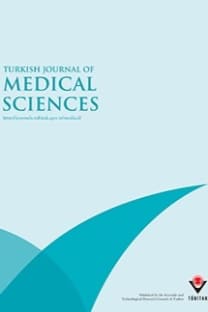The Prevalence and Resistance Patterns of Pseudomonas aeruginosa in Intensive Care Units in a University Hospital
The intensive care units (ICUs) are burdened with a high frequency of nosocomial infections often caused by multiresistant nosocomial pathogens. Pseudomonas aeruginosa has emerged as one of the most problematic Gram-negative pathogens. The objective of this study was to identify frequency of Pseudomonas aeruginosa from the various clinical samples in ICUs, and to investigate resistance patterns against various antibiotics widely used for treatment. This study was carried out between September 2000-September 2002. Antimicrobial susceptibility testing was performed by the disc diffusion method according to NCCLS (National Commitee for Clinical and Laboratory Standards) guidelines. The following antibiotics were tested: imipenem, meropenem, aztreonam, ciprofloxacin, ceftazidime, cefepime, piperacillin, norfloxacin and the aminoglycosides (gentamicin, netilmicin, tobramycin, and amikacin). Pseudomonas aeruginosa were isolated from 16.4 % (152/928) of the patients in ICUs. The highest Pseudomonas aeruginosa isolation was obtained in the burns unit (26.9%, 78/290) followed by, cardiovascular surgical ICU (17.6%, 13/74) general surgical ICU (24/164, 14.6 %), internal ICU (17/180, 9.4%) and coronary ICU (20/220, 9.1%). There is a statististically significant difference between surgical ICU and medical internal ICU (P < 0.05). The most effective antibiotics were carbapenems (imipenem and meropenem) and the resistance rates were detected as 15% and 20.4%, respectively among 152 Pseudomonas aeruginosa strains. In conclusion, the frequency of Pseudomonas aeruginosa was found to be high in patients treated at ICUs. The results demonstrate that the resistance rates are alarmingly high. To reduce the emergence and spread of antimicrobial-resistant pathogens in ICUs, monitoring and optimisation of antimicrobial use should be considered carefully. These findings suggest that the resistance rates of aminoglycosides, 3th generation antibiotics and quinolone are increasing progressively in Turkey.
The Prevalence and Resistance Patterns of Pseudomonas aeruginosa in Intensive Care Units in a University Hospital
The intensive care units (ICUs) are burdened with a high frequency of nosocomial infections often caused by multiresistant nosocomial pathogens. Pseudomonas aeruginosa has emerged as one of the most problematic Gram-negative pathogens. The objective of this study was to identify frequency of Pseudomonas aeruginosa from the various clinical samples in ICUs, and to investigate resistance patterns against various antibiotics widely used for treatment. This study was carried out between September 2000-September 2002. Antimicrobial susceptibility testing was performed by the disc diffusion method according to NCCLS (National Commitee for Clinical and Laboratory Standards) guidelines. The following antibiotics were tested: imipenem, meropenem, aztreonam, ciprofloxacin, ceftazidime, cefepime, piperacillin, norfloxacin and the aminoglycosides (gentamicin, netilmicin, tobramycin, and amikacin). Pseudomonas aeruginosa were isolated from 16.4 % (152/928) of the patients in ICUs. The highest Pseudomonas aeruginosa isolation was obtained in the burns unit (26.9%, 78/290) followed by, cardiovascular surgical ICU (17.6%, 13/74) general surgical ICU (24/164, 14.6 %), internal ICU (17/180, 9.4%) and coronary ICU (20/220, 9.1%). There is a statististically significant difference between surgical ICU and medical internal ICU (P < 0.05). The most effective antibiotics were carbapenems (imipenem and meropenem) and the resistance rates were detected as 15% and 20.4%, respectively among 152 Pseudomonas aeruginosa strains. In conclusion, the frequency of Pseudomonas aeruginosa was found to be high in patients treated at ICUs. The results demonstrate that the resistance rates are alarmingly high. To reduce the emergence and spread of antimicrobial-resistant pathogens in ICUs, monitoring and optimisation of antimicrobial use should be considered carefully. These findings suggest that the resistance rates of aminoglycosides, 3th generation antibiotics and quinolone are increasing progressively in Turkey.
